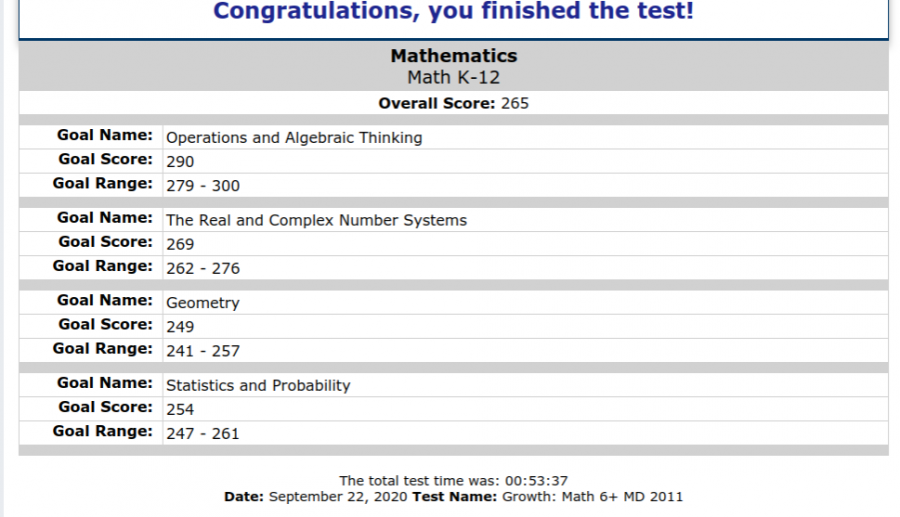The NWEA MAP (Measures of Academic Progress) test is a widely utilized assessment tool designed to measure student growth and proficiency in core academic areas. As of 2025, understanding how to interpret these scores is crucial for educators, parents, and students aiming to track academic progress effectively.
What is the NWEA MAP Test?
The NWEA MAP test is an adaptive assessment created by the Northwest Evaluation Association (NWEA). It is used by schools across the United States and internationally to measure student achievement and growth in reading, math, science, and language usage. Unlike traditional standardized tests, the MAP test is tailored to each student’s ability level, making it a more accurate tool for tracking progress over time.
Key Features of the NWEA MAP Test
- Adaptive Design: The test adjusts its difficulty in real-time based on the student’s responses. If a student answers a question correctly, the next question will be more challenging. If they answer incorrectly, the next question will be easier.
- Multiple Subjects: The MAP test covers four main subjects—reading, math, science, and language usage—allowing educators to assess a wide range of skills.
- Growth Tracking: By administering the test multiple times a year, schools can track student growth and measure the effectiveness of their instructional strategies.
- Immediate Results: Unlike traditional tests, the MAP test provides immediate feedback, enabling teachers to quickly identify areas where students may need additional support.

Interpreting RIT Scores
The MAP test utilizes the RIT (Rasch Unit) scale, an equal-interval scale that measures a student's academic knowledge, regardless of grade level. RIT scores typically range from about 100 to 300, with higher scores indicating higher achievement. This scale allows for the monitoring of a student's growth over time, providing a clear picture of their academic development.
NWEA MAP Scores by Grade Level
Understanding the average RIT scores by grade level can help contextualize a student's performance. Below is a general overview of mean RIT scores for the fall testing period:
- Kindergarten: Reading – 140; Math – 140
- 1st Grade: Reading – 160; Math – 162
- 2nd Grade: Reading – 175; Math – 176
- 3rd Grade: Reading – 188; Math – 190
- 4th Grade: Reading – 198; Math – 201
- 5th Grade: Reading – 205; Math – 211
- 6th Grade: Reading – 211; Math – 217
- 7th Grade: Reading – 215; Math – 222
- 8th Grade: Reading – 218; Math – 226
These map testing scores are approximate and can vary based on the specific cohort and testing conditions.
Utilizing MAP Scores
MAP scores serve multiple purposes:
- Identifying Strengths and Weaknesses: Educators can pinpoint specific areas where a student excels or may need additional support.
- Informing Instruction: Teachers can tailor their instruction based on individual student needs, ensuring that each student receives appropriate challenges and support.
- Monitoring Growth: By comparing scores from different testing periods (fall, winter, spring), educators and parents can track a student's academic growth over time.
- Setting Goals: Students and teachers can set realistic and measurable academic goals based on RIT scores, fostering a growth mindset and encouraging continuous improvement.
Tips for Improving MAP Scores
- Regular Practice: Encourage consistent practice in reading, math, and other tested subjects to build foundational skills.
- Familiarity with Test Format: Utilize practice tests to help students become comfortable with the test format and question types.
- Address Knowledge Gaps: Identify and focus on areas where the student may have gaps in understanding.
- Encourage a Growth Mindset: Foster an environment where effort and improvement are valued, helping students stay motivated.
- Parental Involvement: Parents should stay engaged with their child's learning, providing support and resources as needed.
Conclusion
The NWEA MAP test is a valuable tool for assessing and supporting student academic growth. By understanding and effectively utilizing MAP scores, educators and parents can make informed decisions to enhance educational outcomes, ensuring that each student reaches their full potential.

